Food. What's In It? by Dr. Sunny Ferrero, Rasmussen College
April 4, 2015
Ocala's April Science Saturday was "Food. What's In It?". This event was presented by Dr. Sunny Ferrero, biology professor at Rasmussen College. This topic included hands-on activities about food and food science. Thanks to the season sponsors, Lockheed Martin, Oak Lane Farm, and Ron and Phyllis Ewers for making this and other Science Saturdays possible.
-

Ocala's April Science Saturday was "Food. What's In It?". This event was presented by Dr. Sunny Ferrero, biology professor at Rasmussen College. This topic included hands-on activities about food and food science. Thanks to the season sponsors, Lockheed Martin, Oak Lane Farm, and Ron and Phyllis Ewers for making this and other Science Saturdays possible.
-

The first activity was about ingredients.
-

Working in groups and assisted by high school volunteers, students classified ingredients on food containers as "animal", "plant", "chemical", or "unknown".
-

Students classified ingredients in pairs, which is not only more fun than working alone, but also representative of how scientists often work - in teams.
-
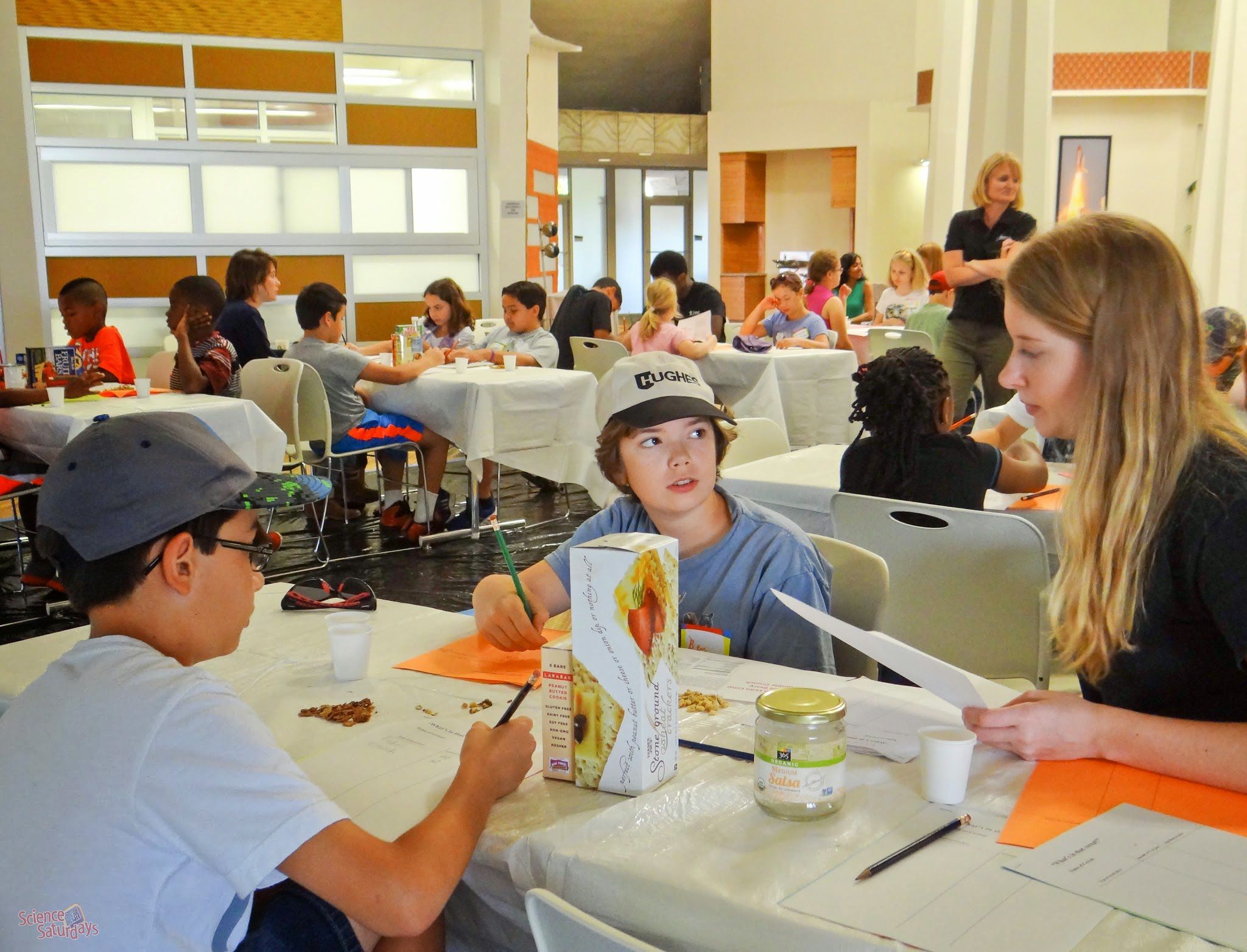
In this photo volunteer Savannah works with two fourth graders who are discovering quite a few "unknowns".
-
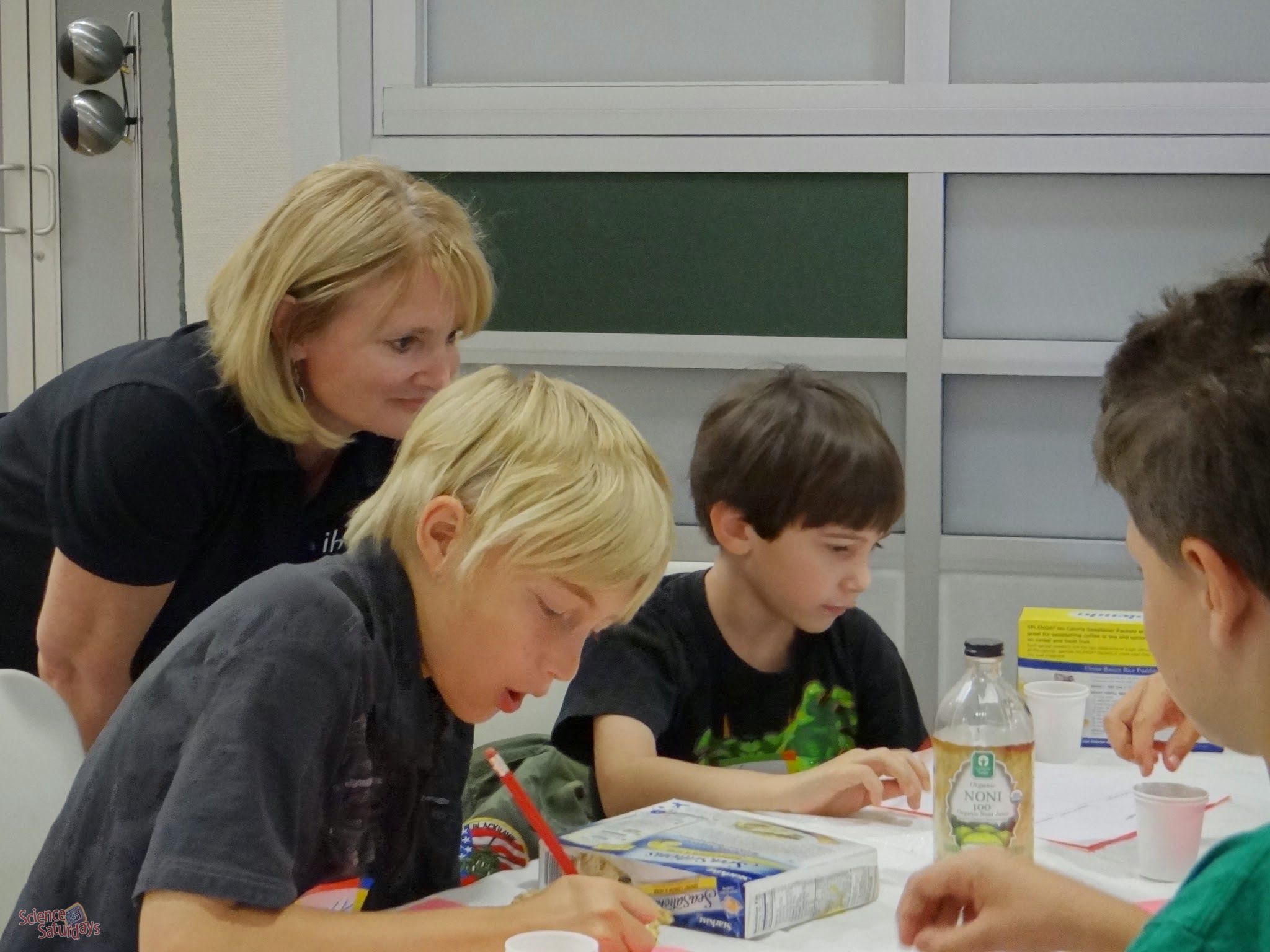
Some of the unknowns made for interesting discussion. Were they chemical? Were they made from corn? Ursula tried to help - but it turned out that not even Sunny knew what all of them were.
-
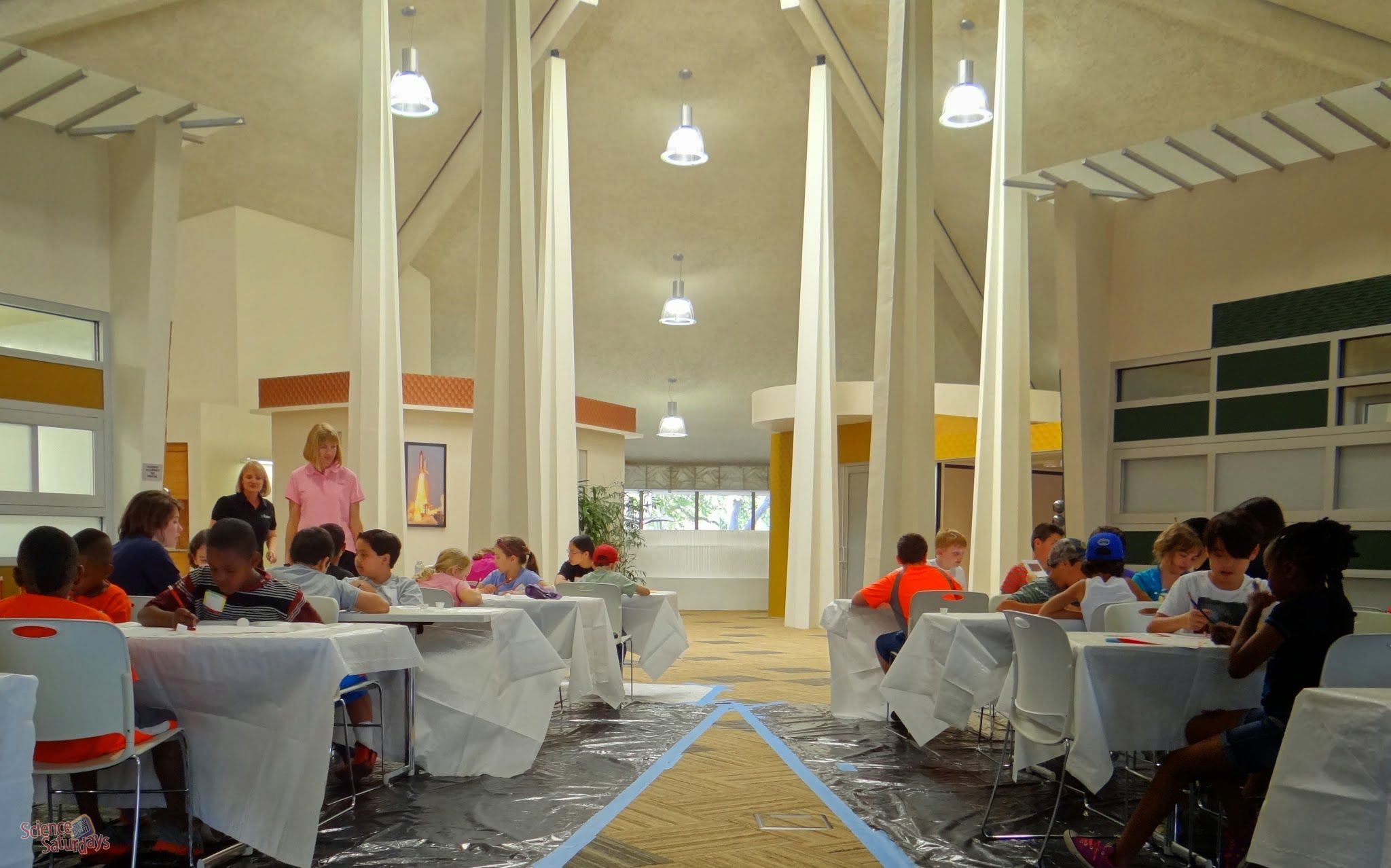
The second activity was about seeing or recognizing ingredients in food.
-
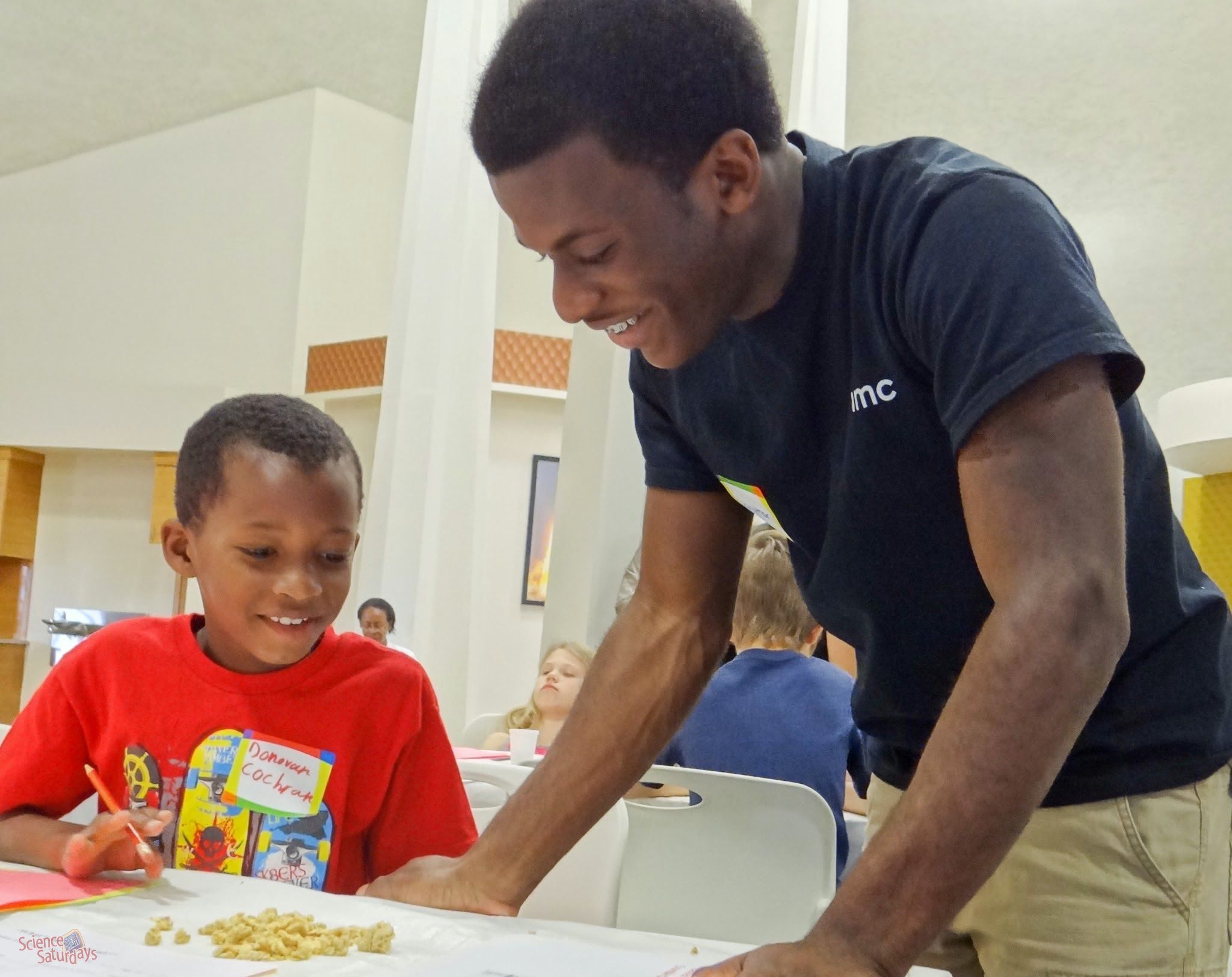
Students sorted the visible ingredients into piles.
-
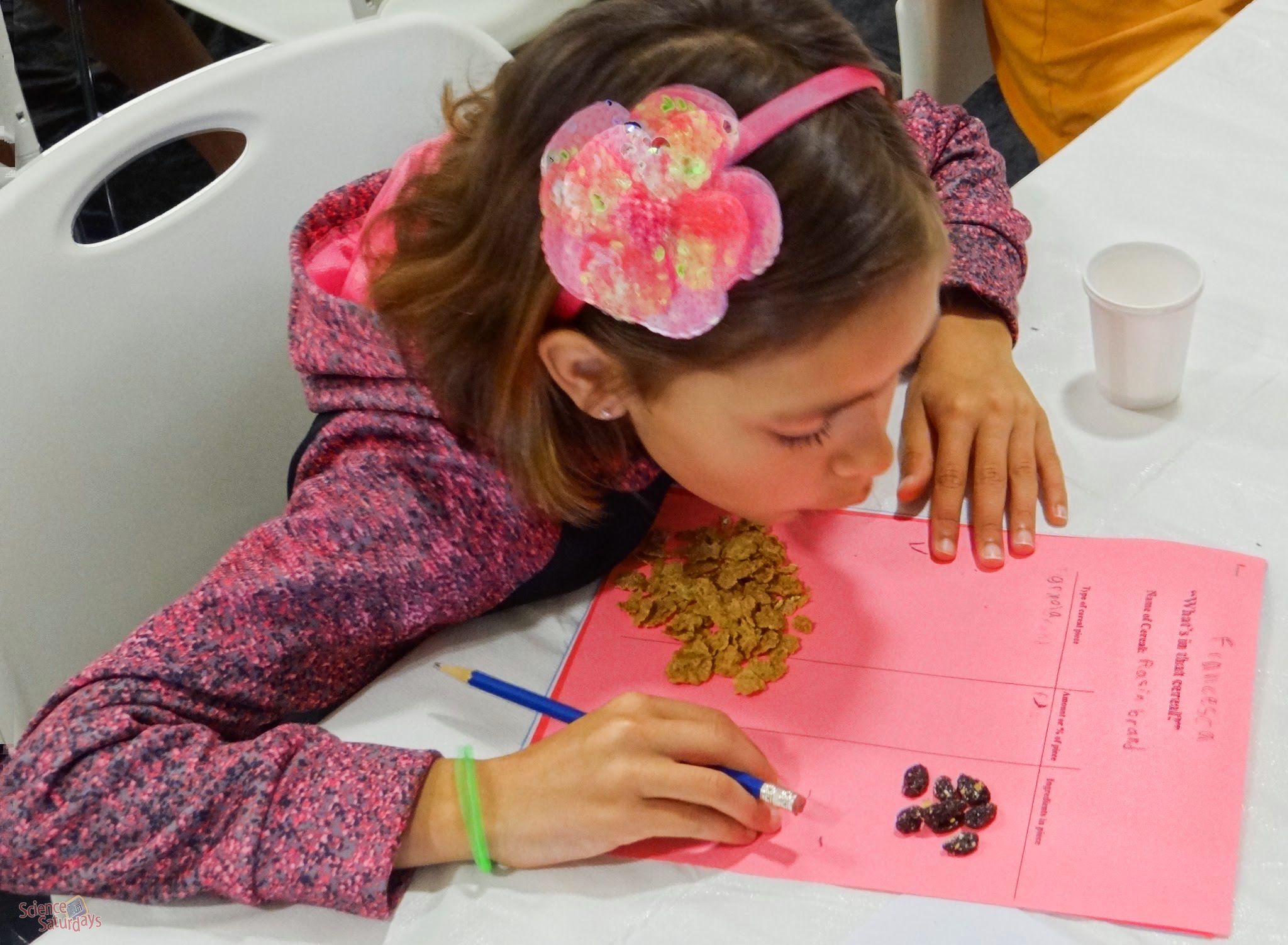
Then they analyzed how much of each ingredient they could find in the food.
-
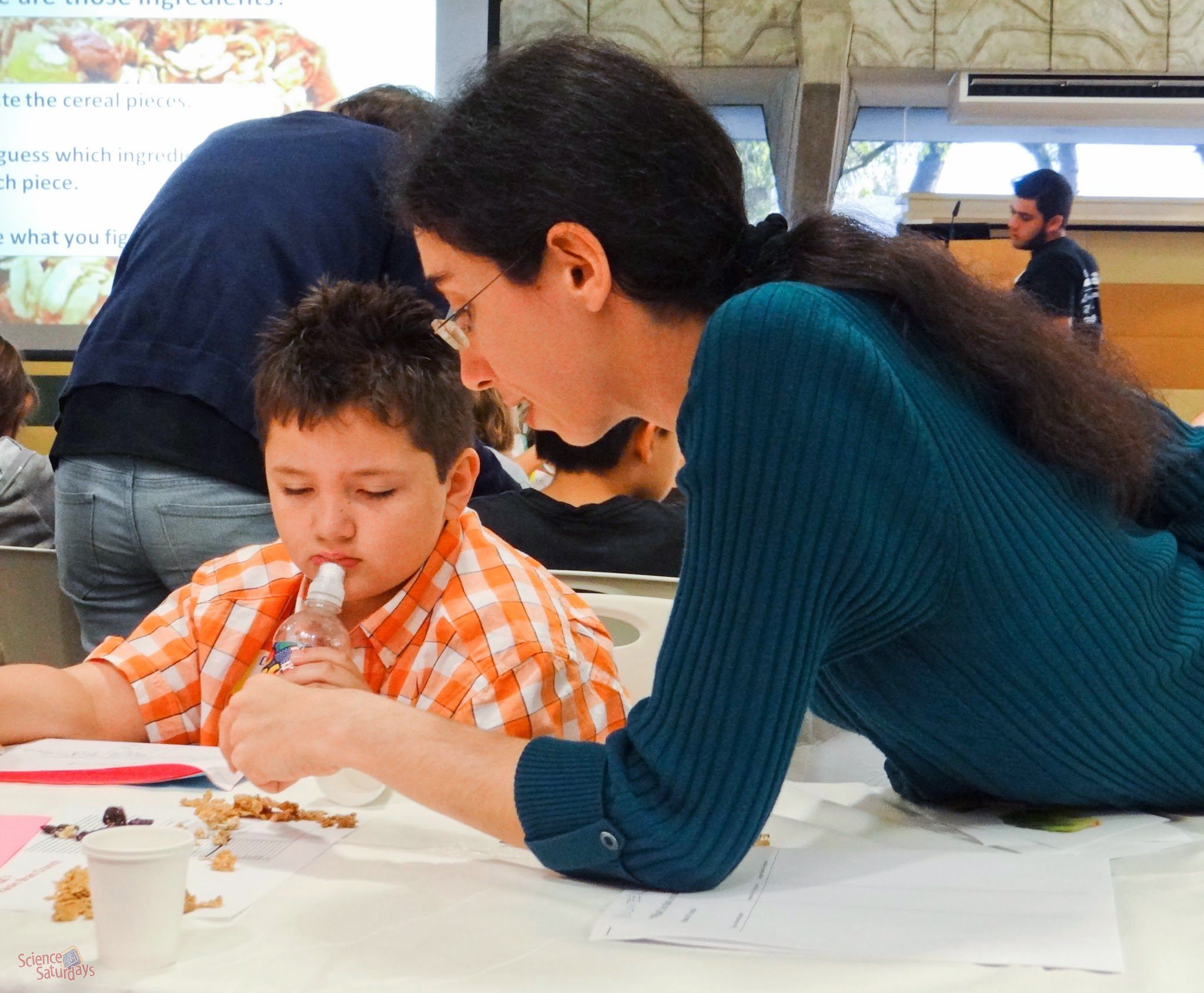
Sunny helped to understand or find some of the ingredients that weren't individually visible.
-
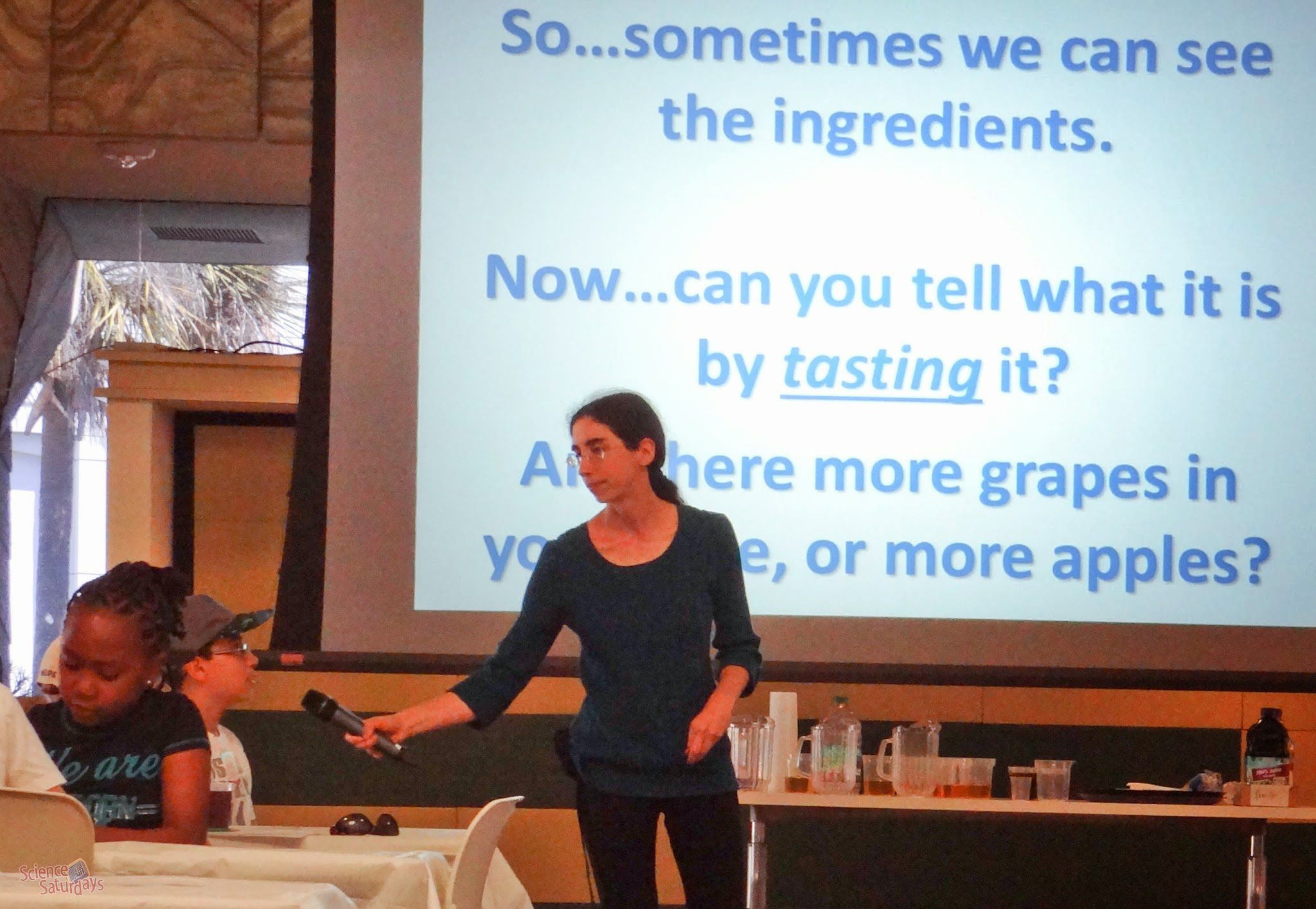
The next activity was about trying to taste individual ingredients.
-
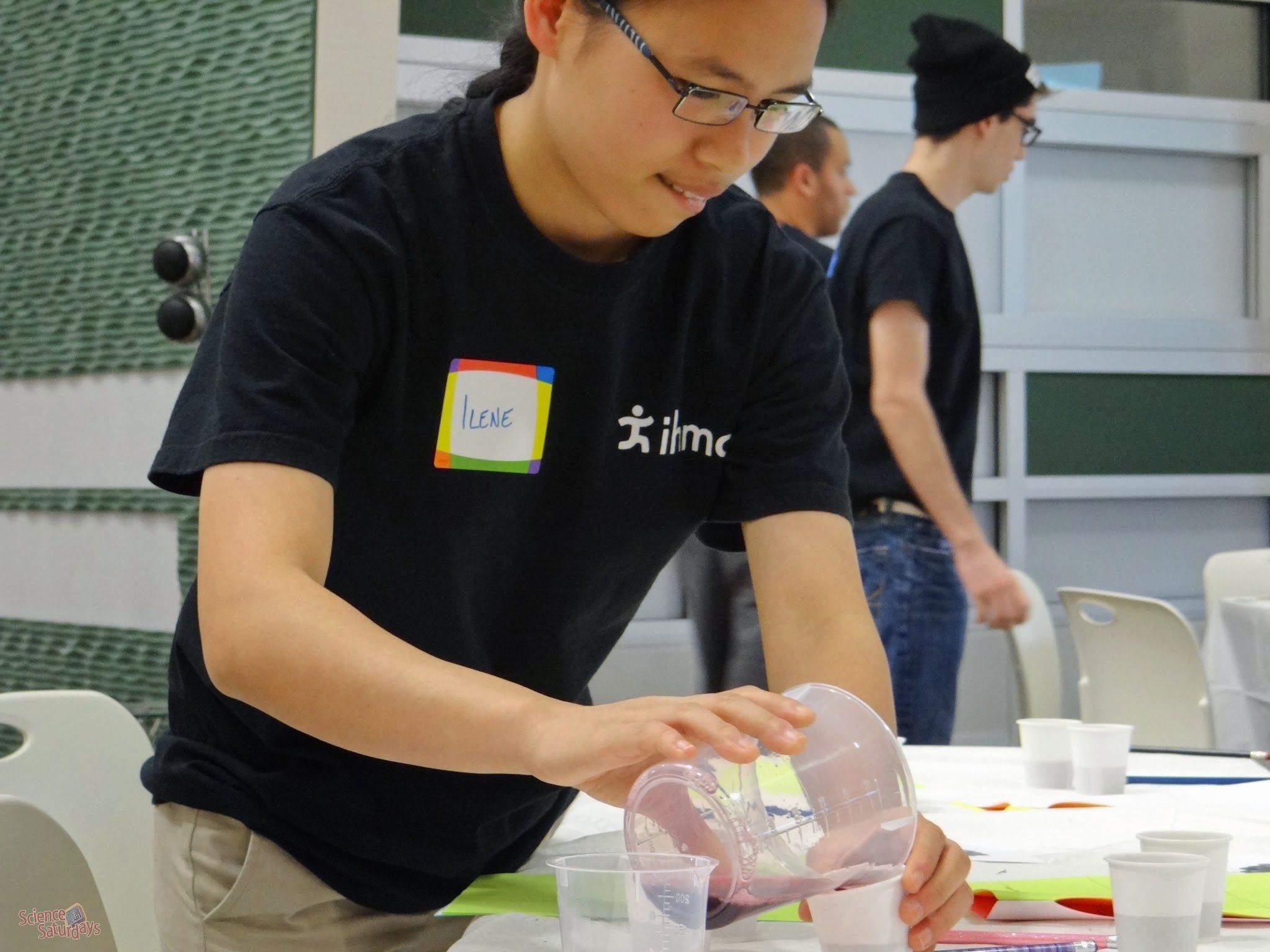
Volunteers carefully poured various juices from beakers into small tasting cups. (This is Ilene. She's graduating from Forest High School this year and has been accepted to Cornell University to study Food Science. We thank Ilene for four years of Science Saturdays and we wish her luck in her studies.)
-
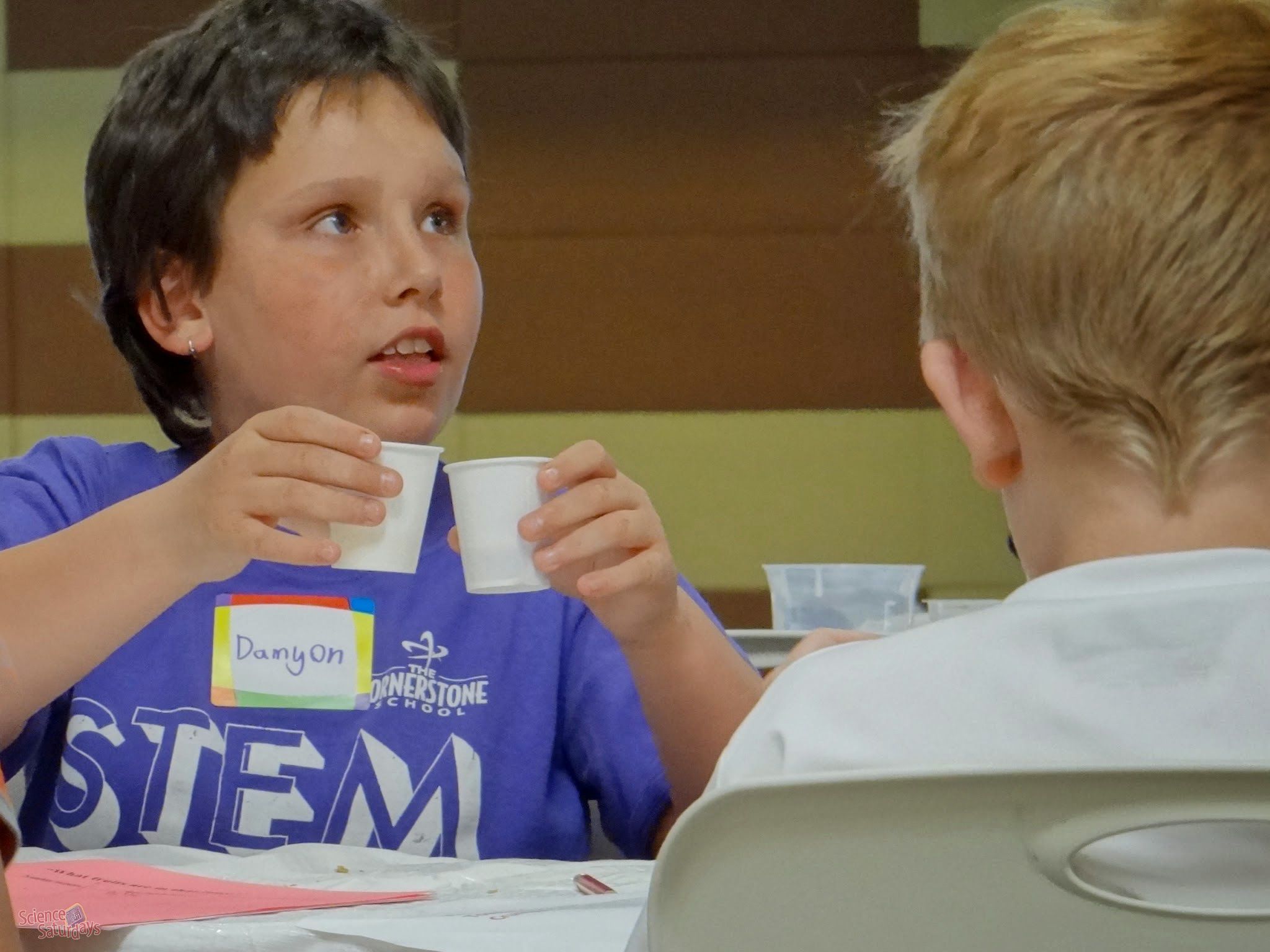
Pure juices were compared to juice blends.
-
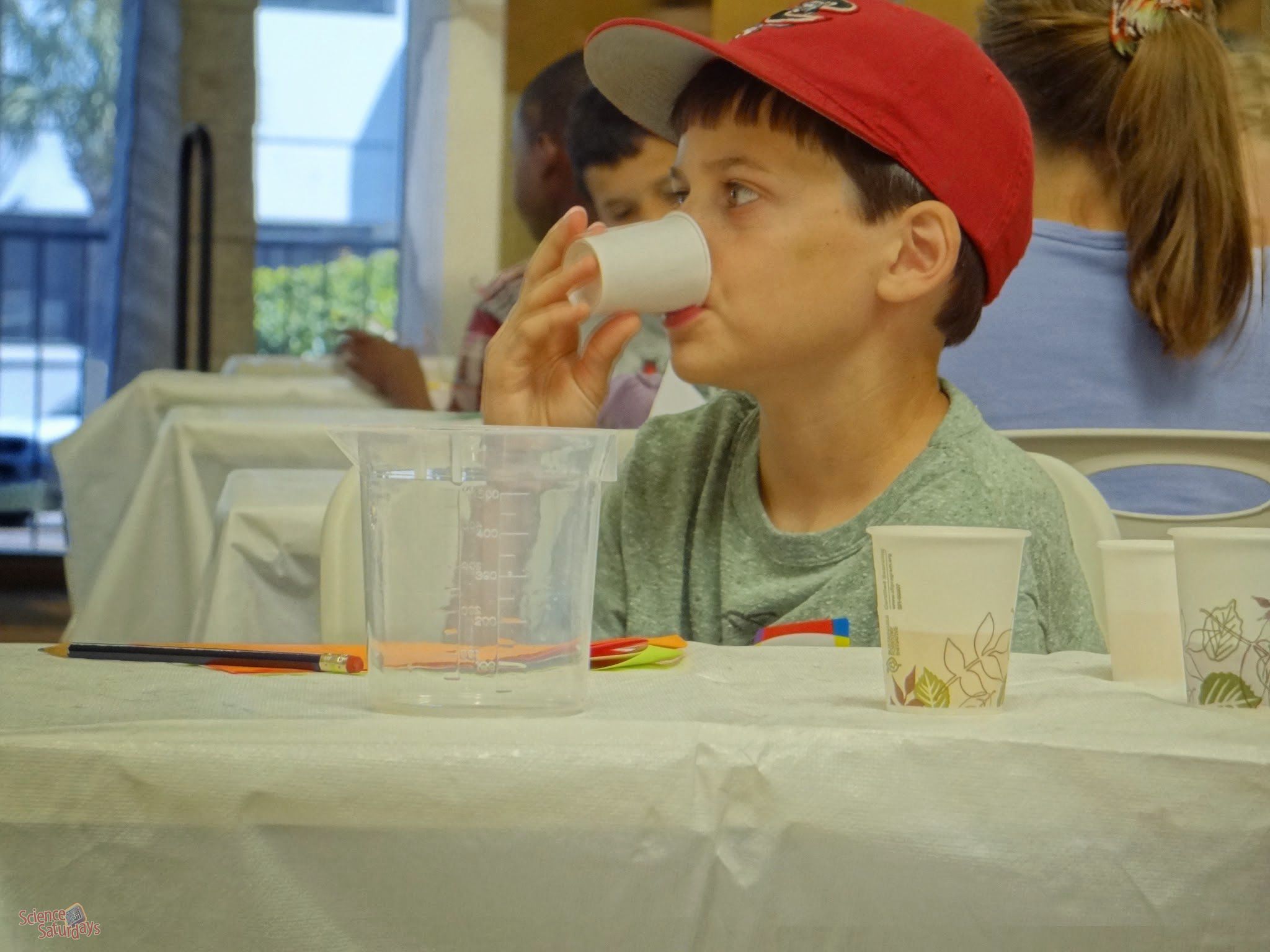
We tried to taste the differences, and to identify the juices in the juice blends. Why do manufacturers create blends? (Not necessarily because it tastes better.)
-
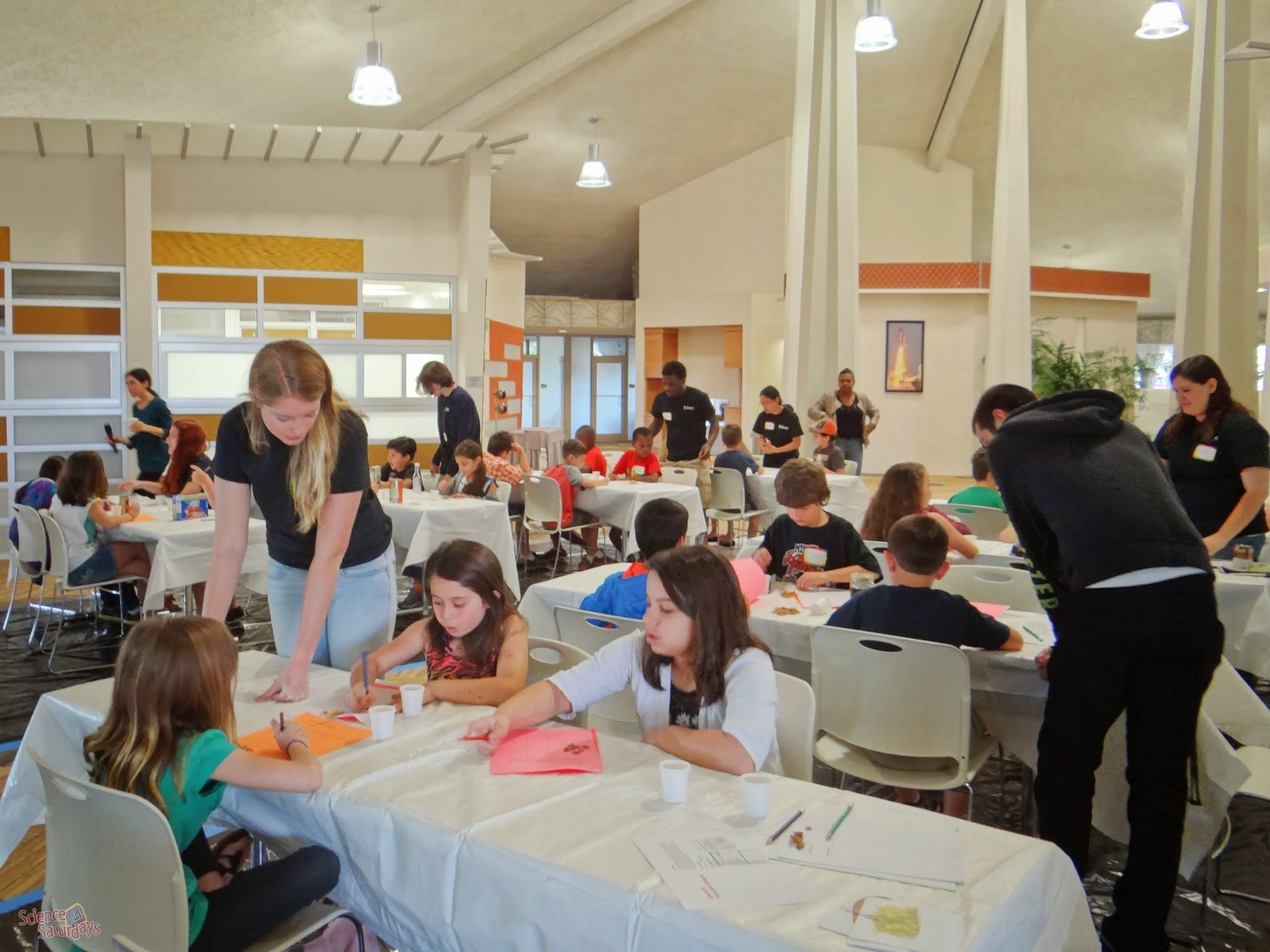
Tasting food and taking notes about one's observations is part of food science. Students and volunteers were highly engaged in this activity.
-
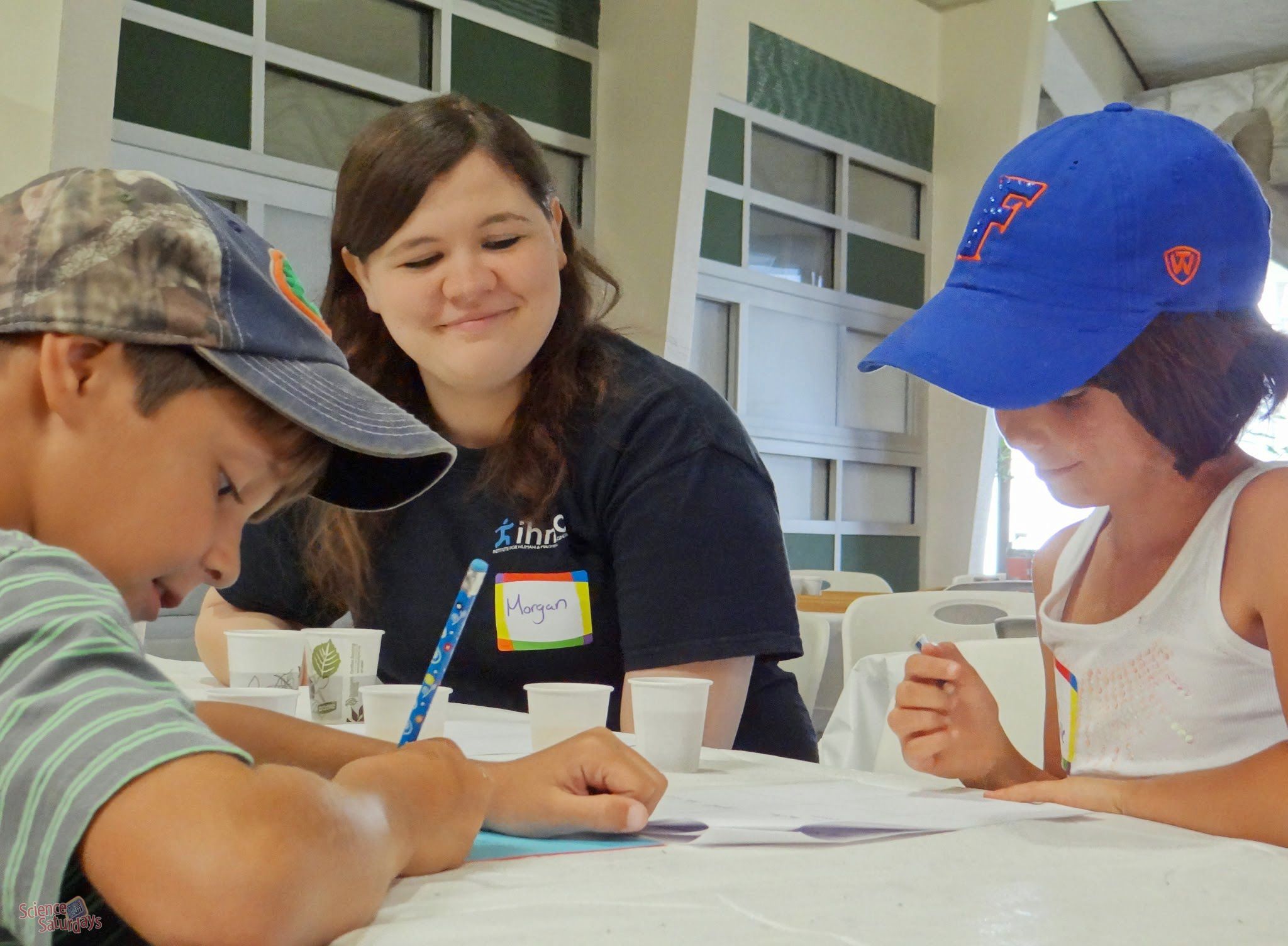
Volunteer Morgan is graduating this year from Belleview High School. She plans to major in elementary school education. A lucky school will have a grade school teacher who understands a lot about science. Morgan volunteered at Science Saturday for two years - we appreciate her time and effort!
-
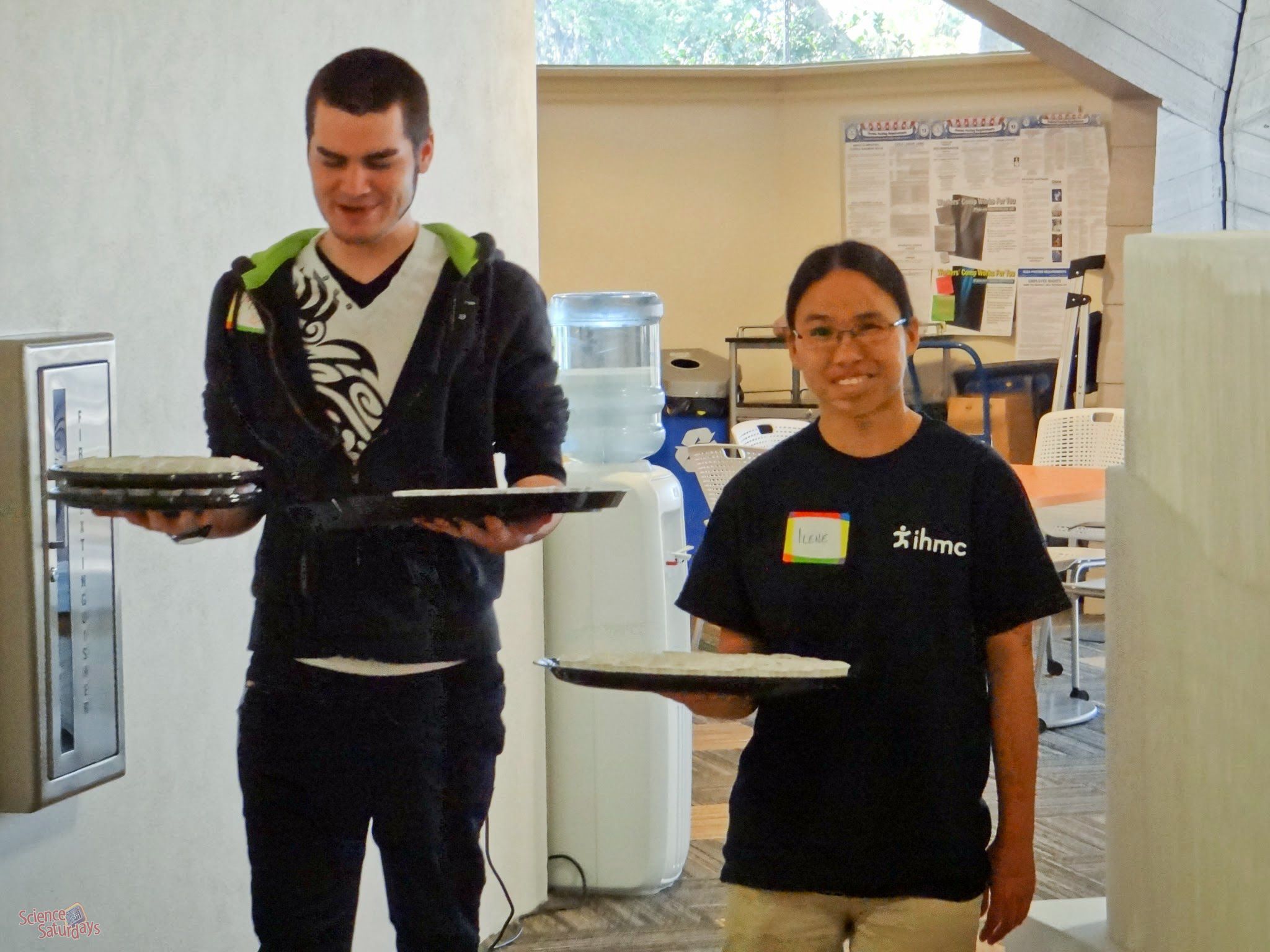
And the final activity…. was about…. chocolate! Volunteers distributed samples. Students tasted and compared dark chocolate, milk chocolate, and white chocolate.
-
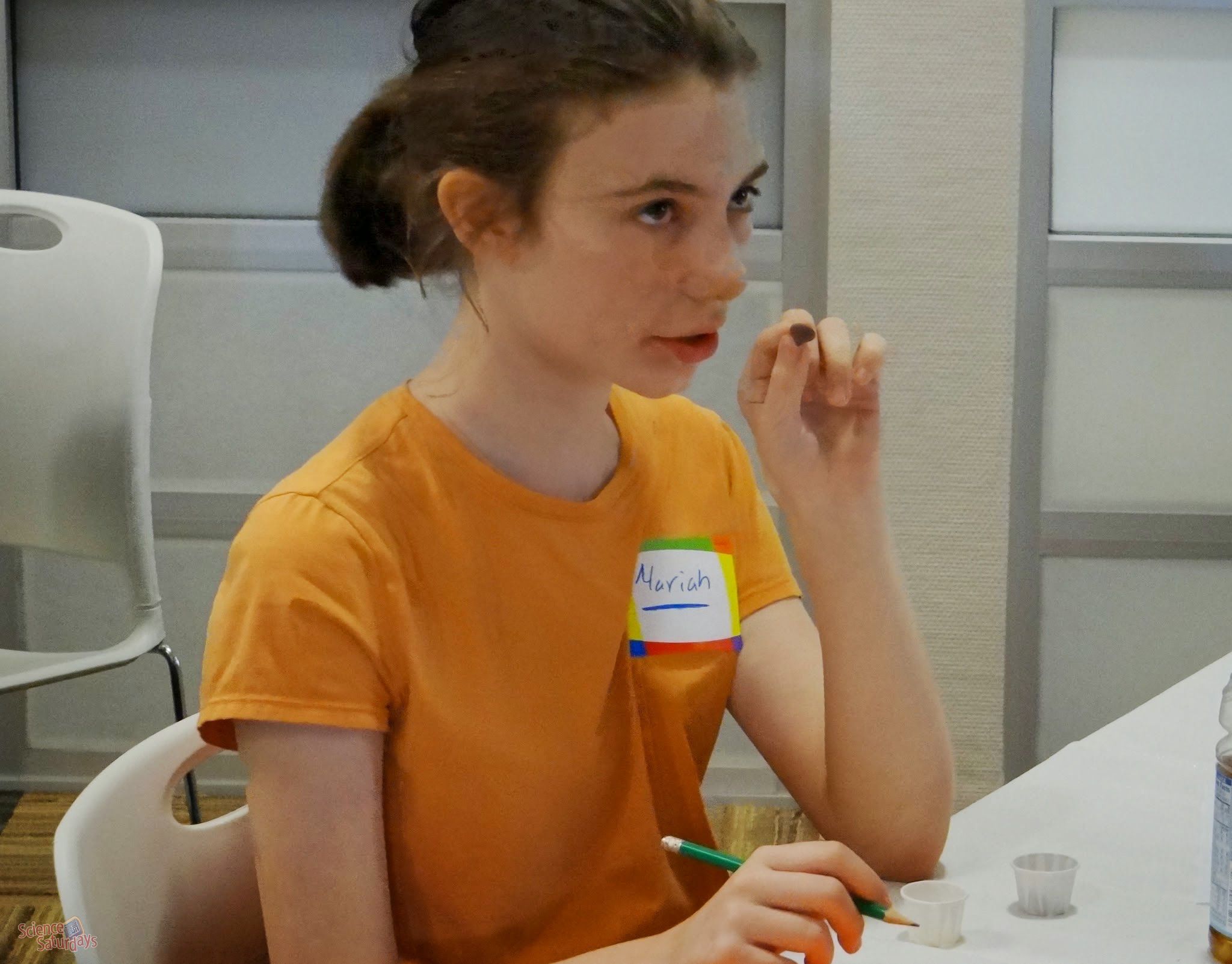
They compared the flavors and had to guess how much actual chocolate was in each sample. Who knew that white chocolate has 0% chocolate?
-
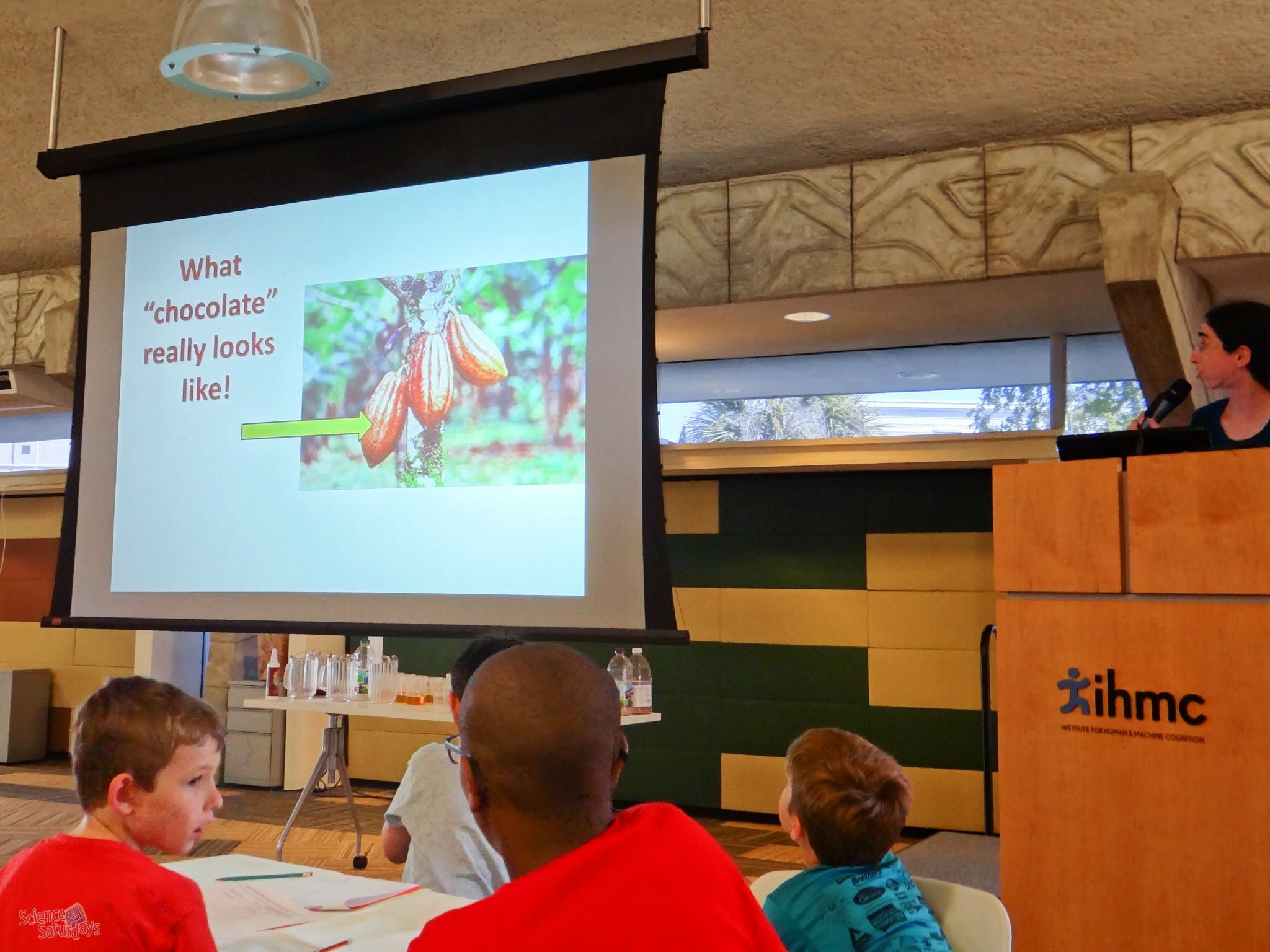
This is what chocolate really looks like. It comes from a plant - the cacao bean.
-
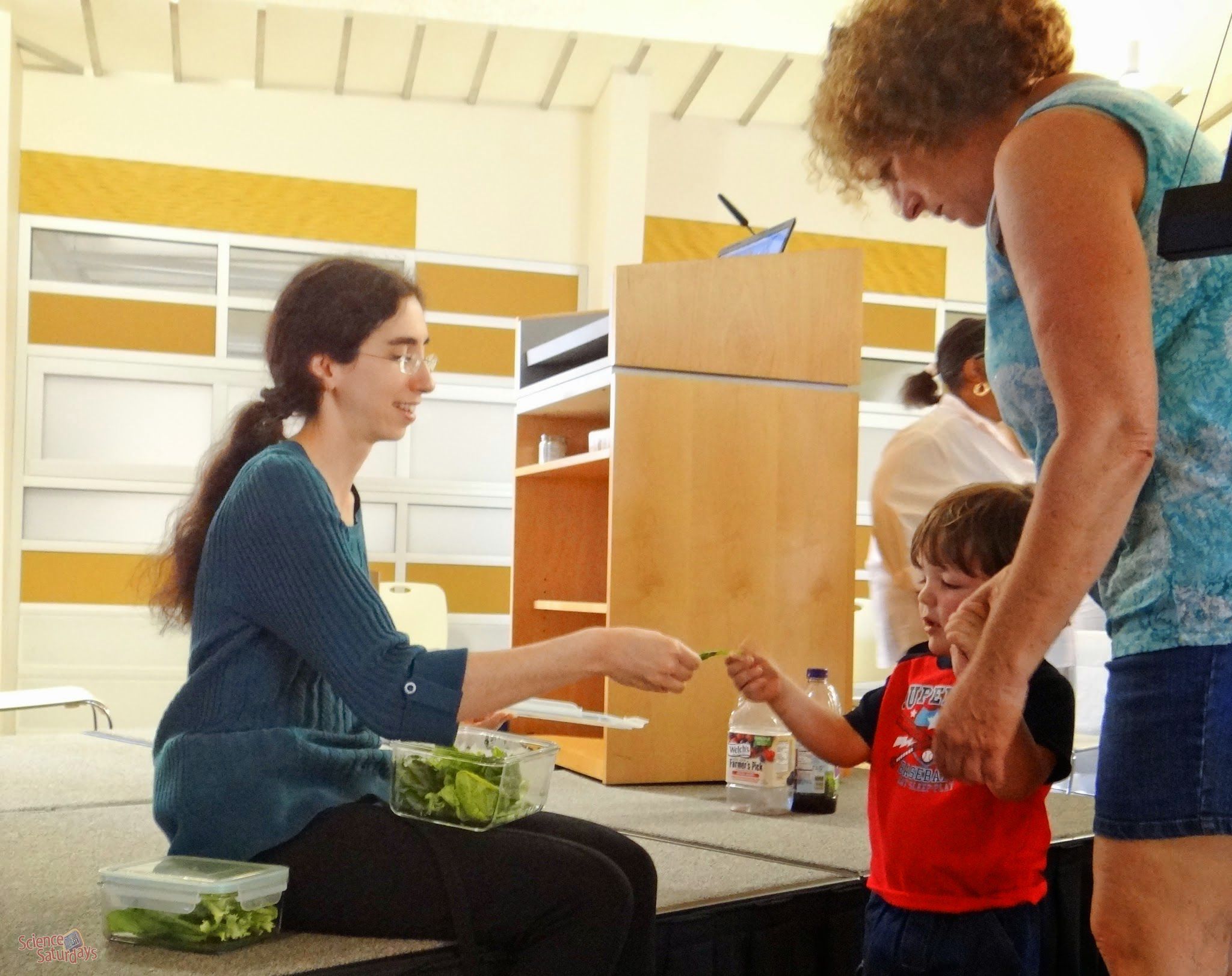
At the end of this Science Saturday, Sunny offered students and parents the opportunity to taste organic, hand-picked spinach from a local farm.
-
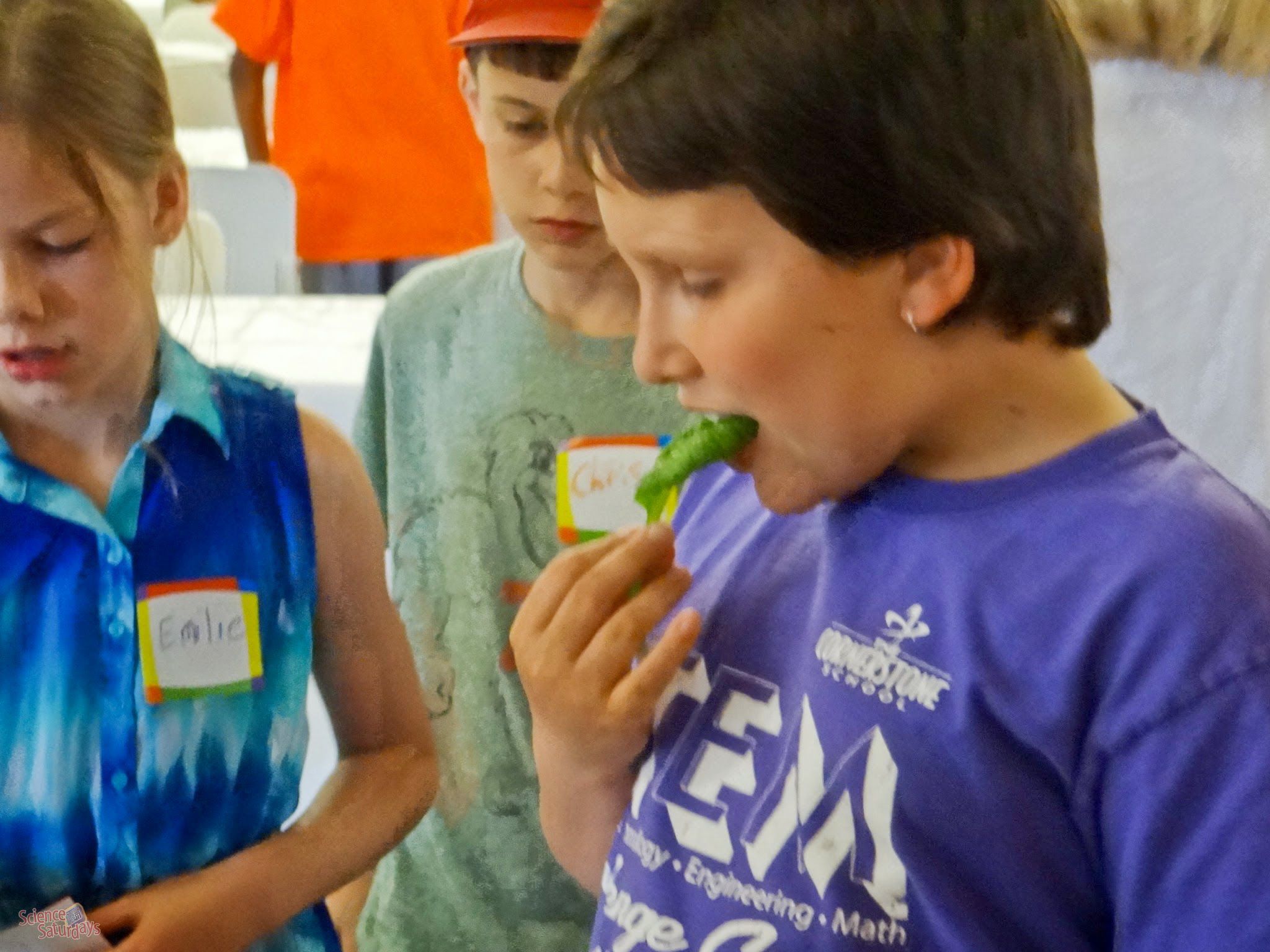
We were surprise to see how many kids were excited to taste spinach. Curiosity - it's a big part of science!
-
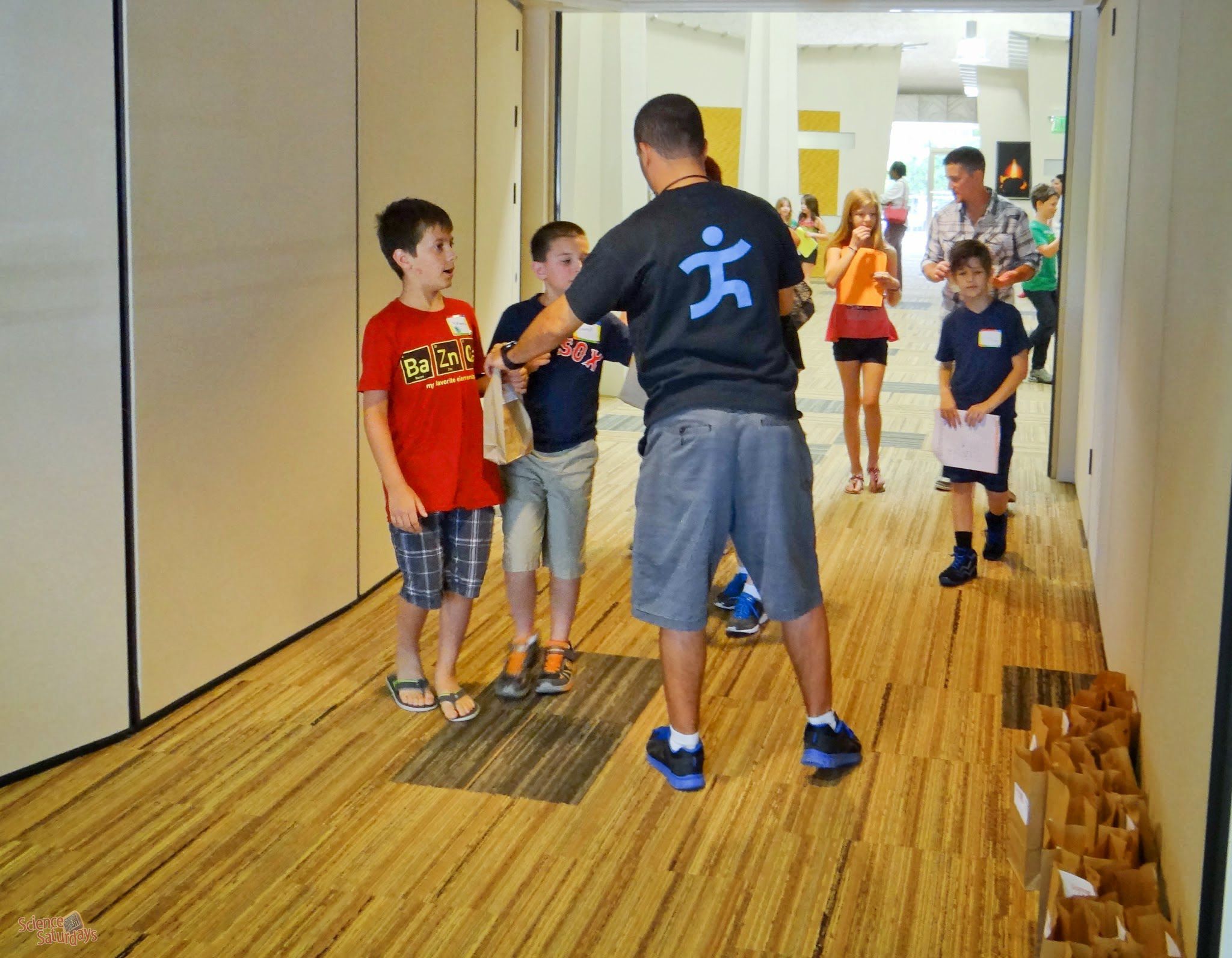
Goody bags to take home contained Organic Kraft Macaroni and Cheese - which we were surprised to learn was no more expensive than the regular kind. Also included in the bags was a worksheet for categorizing the ingredients.
-
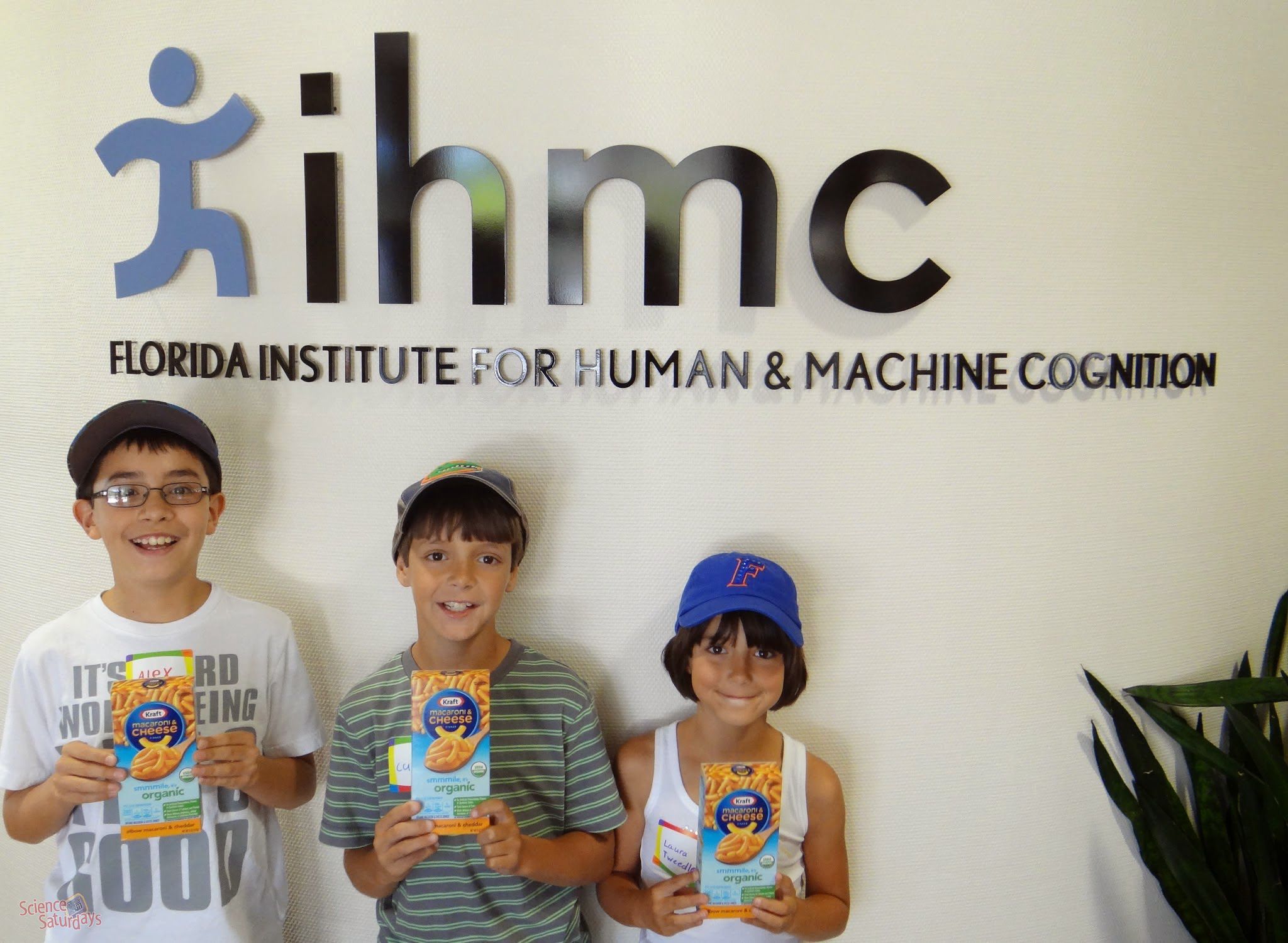
Everyone likes macaroni and cheese. Understanding what's in it makes it even better. Thank you Sunny for a great Science Saturday. Thank you Publix Supermarket Charities for sponsoring this event. And thank you, Kraft Foods, for providing the opportunity to sample your organic mac and cheese - in the context of food science!

